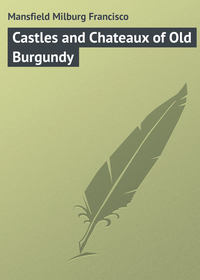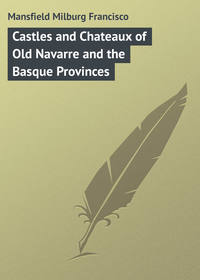 полная версия
полная версияDumas' Paris
“‘M. Noirtier, Rue Coq-Héron, No. 13,’ murmured he, growing still paler.
“‘Yes,’ said Dantès; ‘do you then know him?’
“‘No,’ replied Villefort; ‘a faithful servant of the king does not know conspirators.’
“‘It is a conspiracy, then?’ asked Dantès, who, after believing himself free, now began to feel a tenfold alarm. ‘I have already told you, however, sir, I was ignorant of the contents of the letter.’
“‘Yes, but you knew the name of the person to whom it was addressed,’ said Villefort.
“‘I was forced to read the address to know to whom to give it.’
“‘Have you shown this letter to any one?’ asked Villefort, becoming still more pale.
“‘To no one, on my honour.’
“‘Everybody is ignorant that you are the bearer of a letter from the isle of Elba, and addressed to M. Noirtier?’
“‘Everybody, except the person who gave it to me.’”
The Rue Coq-Héron is one of those whimsically named streets of Paris, which lend themselves to the art of the novelist.
The origin of the name of this tiny street, which runs tangently off from the Rue du Louvre, is curious and naïve. A shopkeeper of the street, who raised fowls, saw, one day, coming out of its shell, a petit coq with a neck and beak quite different, and much longer, than the others of the same brood. Everybody said it was a heron, and the neighbours crowded around to see the phenomenon; and so the street came to be baptized the Rue Coq-Héron.
In the Rue Chaussée d’Antin, at No. 7, the wily Baron Danglars had ensconced himself after his descent on Paris. It was here that Dantès caused to be left his first “carte de visite” upon his subsequent arrival.
Among the slighter works of Dumas, which are daily becoming more and more recognized – in English – as being masterpieces of their kind, is “Gabriel Lambert.” It deals with the life of Paris of the thirties; much the same period as does “Captain Pamphile,” “The Corsican Brothers,” and “Pauline,” and that in which Dumas himself was just entering into the literary life of Paris.
Like “Pauline” and “Captain Pamphile,” too, the narrative, simple though it is, – at least it is not involved, – shifts its scenes the length and breadth of the continent of Europe, and shows a versatility in the construction of a latter-day romance which is quite the equal of that of the unapproachable mediæval romances. It further resembles “The Corsican Brothers,” in that it purveys a duel of the first quality – this time in the Allée de la Muette of the Bois de Boulogne, and that most of the Parisians in the story are domiciled in and about the Boulevard des Italiens, the Rue Taitbout, and the Rue du Helder; all of them localities very familiar to Dumas in real life. In spite of the similarity of the duel of Gabriel to that of De Franchi, there is no repetition of scene or incident detail.
The story deals frankly with the brutal and vulgar malefactor, in this case a counterfeiter of bank notes, one Gabriel, the son of a poor peasant of Normandy, who, it would appear, was fascinated by the ominous words of the inscription which French bank notes formerly bore.
LA LOI PUNIT DE MORTLE CONTREFACTEURDumas occasionally took up a theme which, unpromising in itself, was yet alluring through its very lack of sympathy. “Gabriel Lambert” is a story of vulgar rascality unredeemed by any spark of courage, wit, or humanity. There is much of truth in the characterization, and some sentiment, but little enough of romance of the gallant vagabond order.
Dumas never attempted a more difficult feat than the composition of an appealing story from this material.
Twenty years after the first appearance of “Gabriel Lambert,” in 1844, M. Amédée de Jallais brought Dumas a “scenario” taken from the romance. Unsuitable and unsympathetic though the principal character was, Dumas found the “scenario” so deftly made that he resolved to turn the book into a drama. This was quickly done, and the rehearsals promised a success. On the evening of the first performance Dumas showed himself full of confidence in the play – confidence which amounted almost to certainty; for he said to a friend with whom he promenaded the corridors of the theatre while awaiting the rise of the curtain: “I am sure of my piece; to-night, I can defy the critics.” Some of these gentlemen, unfortunately overhearing him, were provoked to hostility, and, finding unhappy phrases here and there in the piece, they laid hold of them without mercy. Only the comic part of the drama, a scene introduced by Dumas, in which a vagabond steals a clock in the presence of its owner with superb audacity, disarmed their opposition. But the verve of this comic part could not save the play, says Gabriel Ferry, in narrating this anecdote. The antipathy aroused by the principal character doomed it, and the career of the piece was short.
It remains, however, – in the book, at any rate, – a wonderful characterization, with its pictures of the blue Mediterranean at Toulon, the gay life of the Parisian boulevards, its miniature portrait of the great Vidocq, and the sinister account of the prison of Bicêtre, which, since the abandonment of the Place de la Grève, had become the last resort of those condemned to death.
The tale is a short one, but it vibrates between the rues and the boulevards, from the Hôtel de Venise in the Rue des Vieux-Augustins (now the Rue Herold), where Gabriel, upon coming to Paris, first had his lodgings, to the purlieus of the fashionable world, – the old Italian Opera in the Rue Pelletier, – and No. 11 Rue Taitbout, where afterward Gabriel had ensconced himself in a luxurious apartment.
CHAPTER XI.
LA CITÉ
It is difficult to write of La Cité; it is indeed, impossible to write of it with fulness, unless one were to devote a large volume – or many large volumes – to it alone.
To the tourists it is mostly recalled as being the berceau of Nôtre Dame or the morgue. The latter, fortunately, is an entirely modern institution, and, though it existed in Dumas’ own time, did not when the scenes of the D’Artagnan or Valois romances were laid.
Looking toward Nôtre Dame from the Pont du Carrousel, one feels a veritable thrill of emotion as one regards this city of kings and revolutions.
The very buildings on the Ile de la Cité mingle in a symphony of ashen memories. The statue of the great Henri IV., bowered in trees; the two old houses at the apex of the Place Dauphine, in one of which Madame Roland was born; the massive Palais de Justice; the soaring Sainte Chapelle, which St. Louis built for the Crown of Thorns, and “to the glory of God and France,” and the towers of the Conciergerie, whose floor is for ever stained with the tears of Marie Antoinette.
Romance and history have both set their seal upon the locality, and no one better than Dumas has told its story in romance.
Henri of Navarre being Protestant, the Church would not open its doors to him, and thus his marriage to the talented but wicked Margot, sister of Charles IX., took place on a platform erected before its doors.
In the opening chapter of “Marguerite de Valois,” Dumas refers to it thus:
“The court was celebrating the marriage of Madame Marguerite de Valois, daughter of Henri II. and sister of King Charles IX., with Henri de Bourbon, King of Navarre; and that same morning the Cardinal de Bourbon had united the young couple with the usual ceremonial observed at the marriages of the royal daughters of France, on a stage erected at the entrance to Nôtre Dame. This marriage had astonished everybody, and occasioned much surmise to certain persons who saw clearer than others. They could not comprehend the union of two parties who hated each other so thoroughly as did, at this moment, the Protestant party and the Catholic party; and they wondered how the young Prince de Condé could forgive the Duke d’Anjou, the king’s father, for the death of his father, assassinated by Montesquieu at Jarnac. They asked how the young Duke de Guise could pardon Admiral de Coligny for the death of his father, assassinated at Orleans by Poltrot de Mère.”
La Cité
The Tour de Nesle is one of those bygones of the history of Paris, which as a name is familiar to many, but which, after all, is a very vague memory.
It perpetuates an event of bloodshed which is familiar enough, but there are no tangible remains to mark the former site of the tower, and only the name remains – now given to a short and unimportant rue.
The use of the title “La Tour de Nesle,” by Dumas, for a sort of second-hand article, – as he himself has said, – added little to his reputation as an author, or, rather, as a dramatist.
In reality, he did no more than rebuild a romantic drama, such as he alone knows how to build, out of the framework which had been unsuccessfully put together by another – Gaillardet. However, it gives one other historical title to add to the already long list of his productions.
The history of the Conciergerie is most lurid, and, withal, most emphatic, with regard to the political history of France. For the most part, it is more associated with political prisoners than with mere sordid crime, as, indeed, to a great extent were many of the prisons of France.
The summer tourist connects it with Marie Antoinette; visits the “Cachot de Marie Antoinette;” the great hall where the Girondists awaited their fate; and passes on to the Palais des Beaux Arts, with never a thought as to the great political part that the old prison played in the monarchial history of France.
To know it more fully, one should read Nogaret’s “Histoire des Prisons de Paris.” There will be found anecdotes and memoirs, “rares et precieux” and above all truthful.
It has been eulogized, or, rather, anathematized in verse by Voltaire, —
“Exterminez, grandes Dieux, de la terre ou nous sommesQuiconque avec plaisir repand le sang des hommes,” —and historians and romancists have made profuse use of the recollections which hang about its grim walls.
To-day it stands for much that it formerly represented, but without the terrible inquisitorial methods. In fact, in the Palais de Justice, which now entirely surrounds all but the turreted façade of tourelles, which fronts the Quai de l’Horloge, has so tempered its mercies that within the past year it has taken down that wonderful crucifix and triptych, so that those who may finally call upon the court of last appeal may not be unduly or superstitiously affected.
The Place de la Grève opposite was famous for something more than its commercial reputation, as readers of the Valois romances of Dumas, and of Hugo’s “Dernier Jour d’un Condamné” will recall. It was a veritable Gehenna, a sort of Tower Hill, where a series of events as dark and bloody as those of any spot in Europe held forth, from 1310, when a poor unfortunate, Marguerite Porette, was burned as a heretic, until 1830, – well within the scope of this book, – when the headsmen, stakesmen, and hangmen, who had plied their trade here for five centuries, were abolished in favour of a less public barrière on the outskirts, or else the platform of the prison near the Cimetière du Père la Chaise.
It was in 1830 that a low thief and murderer, Lacenaire, who was brought to the scaffold for his crimes, published in one of the Parisian papers some verses which were intended to extract sympathy for him as un homme de lettres. In reality they were the work of a barrister, Lemarquier by name, and failed utterly of their purpose, though their graphic lines might well have evoked sympathy, had the hoax carried:
“Slow wanes the long night, when the criminal wakes;And he curses the morn that his slumber breaks;For he dream’d of other days.“His eyes he may close, – but the cold icy touchOf a frozen hand, and a corpse on his couch,Still comes to wither his soul.“And the headsman’s voice, and hammer’d blowsOf nails that the jointed gibbet close,And the solemn chant of the dead!”La Conciergerie was perhaps one of the greatest show-places of the city for the morbidly inclined, and permission à visiter was at that time granted avec toutes facilités, being something more than is allowed to-day.
The associations connected with this doleful building are great indeed, as all histories of France and the guide-books tell. It was in the chapel of this edifice that the victims of the Terror foregathered, to hear the names read out for execution, till all should have been made away.
Müller’s painting in the Louvre depicts, with singular graphicness, this dreadful place of detention, where princes and princesses, counts, marquises, bishops, and all ranks were herded amid an excruciating agony.
In “The Queen’s Necklace” we read of the Conciergerie – as we do of the Bastille. When that gang of conspirators, headed by Madame de la Motte, – Jeanne de St. Remy de Valois, – appeared for trial, they were brought from the Bastille to the Conciergerie.
After the trial all the prisoners were locked for the night in the Conciergerie, sentence not being pronounced till the following day.
The public whipping and branding of Madame de la Motte in the Cour du Justice, – still the cour where throngs pass and repass to the various court-rooms of the Palais de Justice, – as given by Dumas, is most realistically told, if briefly. It runs thus:
“‘Who is this man?’ cried Jeanne, in a fright.
“‘The executioner, M. de Paris,’ replied the registrar.
“The two men then took hold of her to lead her out. They took her thus into the court called Cour de Justice, where was a scaffold, and which was crowded with spectators. On a platform, raised about eight feet, was a post garnished with iron rings, and with a ladder to mount to it. This place was surrounded with soldiers…
“Numbers of the partisans of M. de Rohan had assembled to hoot her, and cries of ‘A bas la Motte, the forger!’ were heard on every side, and those who tried to express pity for her were soon silenced. Then she cried in a loud voice, ‘Do you know who I am? I am the blood of your kings. They strike in me, not a criminal, but a rival; not only a rival, but an accomplice. Yes,’ repeated she, as the people kept silence to listen, ‘an accomplice. They punish one who knows the secrets of – ’
“‘Take care,’ interrupted the executioner.
“She turned and saw the executioner with the whip in his hand. At this sight she forgot her desire to captivate the multitude, and even her hatred, and, sinking on her knees, she said, ‘Have pity!’ and seized his hand; but he raised the other, and let the whip fall lightly on her shoulders. She jumped up, and was about to try and throw herself off the scaffold, when she saw the other man, who was drawing from a fire a hot iron. At this sight she uttered a perfect howl, which was echoed by the people.
“‘Help! help!’ she cried, trying to shake off the cord with which they were tying her hands. The executioner at last forced her on her knees, and tore open her dress; but she cried, with a voice which was heard through all the tumult, ‘Cowardly Frenchmen! you do not defend me, but let me be tortured; oh! it is my own fault. If I had said all I knew of the queen I should have been – ’
“She could say no more, for she was gagged by the attendants: then two men held her, while the executioner performed his office. At the touch of the iron she fainted, and was carried back insensible to the Conciergerie.”
CHAPTER XII.
L’UNIVERSITÉ QUARTIER
L’Université is the quartier which foregathered its components, more or less unconsciously, around the Sorbonne.
To-day the name still means what it always did; the Ecole de Médicine, the Ecole de Droit, the Beaux Arts, the Observatoire, and the student ateliers of the Latin Quarter, all go to make it something quite foreign to any other section of Paris.
The present structure known as “The Sorbonne” was built by Richelieu in 1629, as a sort of glorified successor to the ancient foundation of Robert de Sorbonne, confessor to St. Louis in 1253. The present Université, as an institution, was founded, among many other good and valuable things, which he has not always been given credit for, by the astute Napoleon I.
With the work of the romancer, it is the unexpected that always happens. But this very unexpectedness is only another expression of naturalness; which raises the question: Is not the romancist more of a realist than is commonly supposed?
Dumas often accomplished the unconventional, and often the miraculous, but the gallant attack of D’Artagnan and his three whilom adversaries against the Cardinal’s Guard is by no means an impossible or unreasonable incident. Considering Dumas’ ingenuity and freedom, it would be unreasonable to expect that things might not take the turn that they did.
Of “Les Trois Mousquetaires” alone, the scheme of adventure and incident is as orderly and sagacious as though it had been laid down by the wily cardinal himself; and therein is Dumas’ success as the romancist par excellence of his time. A romancist who was at least enough of a realist to be natural, if unconventional.
Dumas is supposed to have fallen from the heights scaled by means of “Les Trois Mousquetaires,” when he wrote “Vingt Ans Après.” As a piece of literary workmanship, this perhaps is so; as a chronicle of great interest to the reader, who would trace the movement of its plot by existing stones and shrines, it is hardly the case.
One can get up a wonderful enthusiasm for the old Luxembourg quarter, which the Gascon Don Quixote entered by one of the southern gates, astride his Rosinante. The whole neighbourhood abounds with reminiscences of the characters of the tale: D’Artagnan, with the Rue des Fossoyeurs, now the Rue Servandoni; Athos with the Rue Ferou; Aramis, with the Rue de la Harpe, and so on.
There is, however, a certain tangible sentimentality connected with the adventures of Athos, Aramis, D’Artagnan, and Porthos in “Twenty Years After,” that is not equalled by the earlier book, the reputed scenes of which have, to some extent, to be taken on faith.
In “Vingt Ans Après,” the scene shifts rapidly and constantly: from the Rue Tiquetonne, in Paris, to the more luxurious precincts of the Palais Royal; countrywards to Compiègne, to Pierrefonds – which ultimately came into the possession of Porthos; to England, even; and southward as far as Blois in Touraine, near to which was the country estate of Athos.
At the corner of the Rue Vaugirard, which passes the front of the Luxembourg Palace, and the Rue Cassette, is the wall of the Carmelite Friary, where D’Artagnan repaired to fulfil his duelling engagements with the three musketeers of the company of De Treville, after the incidents of the shoulder of Athos, the baldric of Porthos, and the handkerchief of Aramis.
Both sides of the river, and, indeed, the Cité itself, are alive with the association of the King’s Musketeers and the Cardinal’s Guards; so much so that one, with even a most superficial knowledge of Paris and the D’Artagnan romances, cannot fail to follow the shifting of the scenes from the neighbourhood of the Palais du Luxembourg, in “Les Trois Mousquetaires,” to the neighbourhood of the Palais Royal, in “Vingt Ans Après” and the “Vicomte de Bragelonne.”
In “Le Vicomte de Bragelonne,” the fraternal mousquetaires take somewhat varying paths from those which they pursued in the first two volumes of the series. Porthos and Athos had arrived at distinction and wealth, and surrounded themselves accordingly; though, when they came to Paris, they were doubtless frequenters – at times – of their old haunts, but they had perforce to live up to their exalted stations.
With D’Artagnan and Aramis this was not so true. D’Artagnan, it would seem, could not leave his beloved Palais Royal quarter, though his lodgings in the hôtel in the Rue Tiquetonne could have been in no way luxurious, judging from present-day appearances.
In the Université quarter, running squarely up from the Seine is a short, unpretentious, though not unlovely, street – the Rue Guenegard.
It runs by the Hôtel de la Monnaie, and embouches on the Quai Conti, but if you ask for it from the average stroller on the quais, he will reply that he never heard of it.
It was here, however, at “Au Grand Roi Charlemagne,” “a respectable inn,” that Athos lived during his later years.
In the course of three hundred years this inn has disappeared, – if it ever existed, – though there are two hôtels, now somewhat decrepit, on the short length of the street.
Perhaps it was one of these, – the present Hôtel de France, for instance, – but there are no existing records to tell us beyond doubt that this is so.
There is another inn which Dumas mentions in “The Forty-Five Guardsmen,” not so famous, and not traceable to-day, but his description of it is highly interesting and amusing.
“Near the Porte Buci,” says Chapter VII. of the book before mentioned, “where we must now transport our readers, to follow some of their acquaintances, and to make new ones, a hum, like that in a beehive at sunset, was heard proceeding from a house tinted rose colour, and ornamented with blue and white pointings, which was known by the sign of ‘The Sword of the Brave Chevalier,’ and which was an immense inn, recently built in this new quarter. This house was decorated to suit all tastes. On the entablature was painted a representation of a combat between an archangel and a dragon breathing flame and smoke, and in which the artist, animated by sentiments at once heroic and pious, had depicted in the hands of ‘the brave chevalier,’ not a sword, but an immense cross, with which he hacked in pieces the unlucky dragon, of which the bleeding pieces were seen lying on the ground. At the bottom of the picture crowds of spectators were represented raising their arms to heaven, while from above angels were extending over the chevalier laurels and palms. Then, as if to prove that he could paint in every style, the artist had grouped around gourds, grapes, a snail on a rose, and two rabbits, one white and the other gray.
“Assuredly the proprietor must have been difficult to please, if he were not satisfied, for the artist had filled every inch of space – there was scarcely room to have added a caterpillar. In spite, however, of this attractive exterior, the hôtel did not prosper – it was never more than half full, though it was large and comfortable. Unfortunately, from its proximity to the Pré-aux-Clercs, it was frequented by so many persons either going or ready to fight, that those more peaceably disposed avoided it. Indeed, the cupids with which the interior was decorated had been ornamented with moustaches in charcoal by the habitués; and Dame Fournichon, the landlady, always affirmed that the sign had brought them ill-luck, and that, had her wishes been attended to, and the painting represented more pleasing things, such as the rose-tree of love surrounded by flaming hearts, all tender couples would have flocked to them.
“M. Fournichon, however, stuck to his sign, and replied that he preferred fighting men, and that one of them drank as much as six lovers.”
Dumas’ reference to this curiously disposed “happy family” calls to mind the anecdote which he recounts in “The Taking of the Bastille,” concerning salamanders:
“The famous trunk, which had now been dignified with the name of desk, had become, thanks to its vastness, and the numerous compartments with which Pitou had decorated its interior, a sort of Noah’s ark, containing a couple of every species of climbing, crawling, or flying reptiles. There were lizards, adders, ant-eaters, beetles, and frogs, which reptiles became so much dearer to Pitou from their being the cause of his being subjected to punishment more or less severe.
“It was in his walks during the week that Pitou made collections for his menagerie. He had wished for salamanders, which were very popular at Villers-Cotterêts, being the crest of François I., and who had them sculptured on every chimneypiece in the château. He had succeeded in obtaining them; only one thing had strongly preoccupied his mind, and he ended by placing this thing among the number of those which were beyond his intelligence; it was, that he had constantly found in the water these reptiles which poets have pretended exist only in fire. This circumstance had given to Pitou, who was a lad of precise mind, a profound contempt for poets.”









